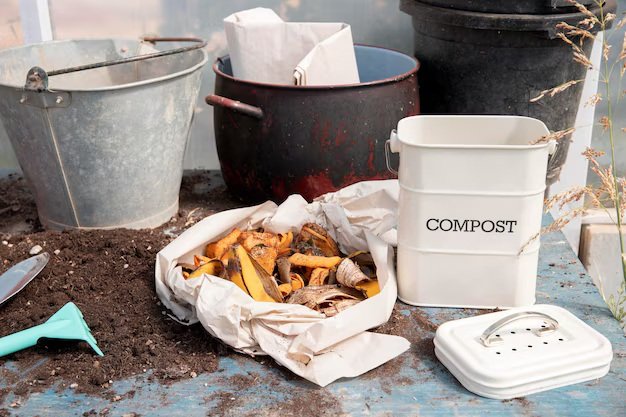Common Plant Diseases: Symptoms, Affected Plants & Organic Treatments
In a landmark study published in Agronomy, researchers estimate that plant diseases cost the global economy over $220 billion annually, wiping out roughly 30–40 % of crop yields each year. Imagine watching entire harvests succumb to invisible foes—tiny spores, stealthy bacteria, or viruses transmitted by aphids—all while your soil seems healthy. This isn’t just a problem for massive farms; hobbyists and window-sill gardeners face the same unseen threats when seedlings suddenly wilt or leaves spot overnight.
In this article, we will look into ten of the most prevalent plant diseases, offering a detective’s eye for symptoms and a toolkit of organic defences—from copper sprays to compost tea. But beyond treatments, we’ll explore the human side: how early observation, thoughtful crop rotation, and tool hygiene can turn gardeners into guardians. By understanding both the science and stories behind plant maladies, you’ll learn not just how to treat disease, but how to cultivate resilience, making every garden patch a place of growth, not grief.

In This Article
- What Are Plant Diseases?
- 10 Common Plant Diseases and Their Symptoms
- Prevention Is Better Than a Cure
- Bringing It All Together – A Gardener’s Toolkit
- Conclusion:
What Are Plant Diseases?
Plant diseases are abnormal conditions caused by pathogens such as fungi, bacteria, viruses, and nematodes. Unlike pest damage, which often shows up as chew marks or holes, diseases are more insidious: curling leaves, black spots, or entire plants wilting overnight.
Categories of Plant Pathogens
| Pathogen Type | How They Work | Common Examples |
|---|---|---|
| Fungi | Thrive in moist or humid conditions, spread via tiny airborne or waterborne spores | Powdery mildew, rusts, and damping-off |
| Bacteria | Microscopic organisms enter through wounds or tiny leaf openings called stomata | Fire blight, bacterial wilt |
| Viruses | Transfer via insects, contaminated tools, or infected seedlings; once inside, they’re tricky to eliminate | Mosaic virus, leaf curl |
| Nematodes | Tiny worms that burrow into roots, weakening the plant’s water and nutrient uptake | Root-knot nematode |
According to a recent genomic overview, approximately 70–80% of plant diseases are caused by fungi, with over 20,000 fungus species infecting crops and plants worldwide. Globally, pathogens across all types slash yields by an estimated 20–40% annually, dramatically impacting food security.
10 Common Plant Diseases and Their Symptoms
1. Powdery Mildew
Symptoms: You’ll notice a white, flour-like coating on leaves, stems, and even flower buds.
Plants Affected: Roses, cucumbers, squash, grapes, and many ornamentals are common targets.
Natural Treatment: A time-tested remedy involves mixing 1 tablespoon of baking soda, 1 teaspoon of neem oil, and 1 litre of water, which is sprayed weekly. Baking soda raises the leaf surface pH to inhibit fungal spore growth, while neem oil, at a 70% concentration, has been shown to kill powdery mildew spores. Just remember: don’t overuse it. Excess sodium can damage plants, affecting nutrient uptake and causing leaf burn. For heavy infections, sulfur dust or copper-based natural fungicides offer better protection.
Why It Works: Sundry gardeners and researchers agree—baking soda–oil mixtures effectively slow mildew, especially when spotted early. Neem’s antifungal properties help too, though lab studies are mixed—its best use is as part of an integrated approach.
2. Tomato Blight (Early and Late)
Symptoms: Look for dark, circular spots on lower leaves, yellowing, and sunken lesions on stems or fruit.
Plants Affected: Heavy on tomatoes and potatoes—blight can devour whole vines.
Natural Treatment: Promptly remove and discard infected leaves to slow the disease’s spread. Apply a copper-based fungicide, such as copper hydroxide or copper sulfate, as a protective measure before blight takes hold, especially in organic gardens. Once symptoms appear, increase applications every 5–7 days. To prevent future outbreaks, rotate crops on a three-year cycle to disrupt soil-borne pathogens, as recommended by the Cornell Vegetable Program.
Putting It in Practice: At the first sign of dark spots on leaves or lesions on stems, prune affected areas and start a copper spray regimen. Apply preventively every 7–10 days, or every 5–7 days if infection is active. Long-term, maintain strict crop rotation and sanitation for continued blight control.
3. Rust
Symptoms: Watch for yellow-orange to red pustules on the undersides of leaves—rust spores that soon mimic soot.
Plants Affected: Beans, hollyhocks, daylilies, and more.
Natural Treatment: Carefully remove and discard infected foliage to limit spore spread. Apply sulfur dust early in the growing season to inhibit spore germination—an age-old method still favoured in organic gardening. Ensure good air circulation and avoid overhead watering, as excess moisture creates ideal conditions for rust to thrive. Strategic plant spacing and mulching can also reduce splashing and spore transfer.
Best Practices: Space plants adequately and prune for airflow. Water at the base rather than on leaves. Apply sulfur dust preventively before humid or windy conditions, and reapply after rain if needed. Consistent garden hygiene and early intervention go a long way in managing rust naturally.
4. Downy Mildew
Symptoms: Yellow patches on upper leaf surfaces, fuzzy grey or white mould underneath.
Plants Affected: Basil, lettuce, grapevines—especially in cool, damp conditions.
Natural Treatment: A chamomile-tea spray can prevent or slow fungal growth. Garden studies show chamomile’s essential oils interfere with spores, reducing incidence when used regularly. In lab tests, thyme oil and biocides outperformed, but chamomile remains a gentle, accessible choice.
Cultural Steps: Improve ventilation, thin dense leaves, avoid overhead watering—airflow and dryness are your best defence.
5. Fire Blight
Symptoms: Twigs, blossoms, even branches suddenly appear blackened and scorched, as though hit with fire or frost.
Plants Affected: Apples, pears, hawthorn.
Natural Treatment: Prune away infected twigs (cut well below visible damage), disinfecting tools between cuts. Perform this on dry days to prevent pathogen spread via ooze. Studies show that garlic extract creates strong inhibition zones (up to 34 mm) against Erwinia amylovora, the fire blight bacterium, and is more effective than many other plant extracts.
Additional Note: Biocontrol using Pseudomonas fluorescens and Bacillus subtilis strains reduced disease severity between 26–44 % in recent field trials.
6. Mosaic Virus
Symptoms: Leaves with blotchy, uneven patches, streaks of light and dark green or yellow, and twisted or stunted new growth.
Plants Affected: Mainly cucumbers, tobacco, tomatoes—but also other cucurbits, nightshades, and leafy greens.
Natural Treatment: Uproot and dispose of infected plants immediately—don’t compost them, as the virus can linger. Do this preferably on dry days to limit the spread. Control aphid populations, because these insects are prime spreaders. Use virus-free or certified resistant seeds. According to the Wisconsin Extension, more than 80 aphid species can transmit cucumber mosaic virus, and seed and pollen can also carry it. Floating row covers and weed control make a difference, as weeds often harbour the virus. Researchers at NDSU emphasise, “The use of virus-free seed is the most effective strategy,” especially in situations without resistant cultivars.
7. Root Rot
Symptoms: Plants may droop or wilt, foliage turns yellow, and roots feel soft or mushy.
Plants Affected: Susceptible houseplants, ferns, and succulents.
Natural Treatment: Repot plants into fresh, well-draining soil—avoid soggy mixes. Use cinnamon powder or chamomile tea as mild antifungal agents on cut roots or transplant soil. Southern Living notes cinnamon’s broad antifungal properties and its use in preventing damping off in seedlings. A ResearchGate study showed cinnamon aqueous filtrates cut grey mould fungal growth by over 50–80% and improved tomato growth in greenhouse tests. Remember: cinnamon helps more as a preventative or wound treatment; it acts fast to seal fresh cuts and discourage pathogens from forming on dying tissue.
8. Anthracnose
Symptoms: Dark, sunken spots appear on leaves, stems, or fruits—often with a water‑soaked look at first, turning dry and ragged over time.
Plants Affected: Commonly seen in mangoes, avocados, beans, peppers, and ornamental trees.
Natural Treatment: Prune away infected twigs and fruits, cutting well below the visible damage—always disinfect tools between cuts. Pruning on dry days helps prevent spores from spreading.
Spray neem oil periodically: Neem acts both as a fungicide (by coating spores, slowing sporulation) and an insect deterrent.
A study showed that neem seed extract (propyl disulfide) significantly inhibited mycelial growth of Colletotrichum gloeosporioides and C. acutatum from mango, showing dose‑dependent inhibition under in vitro assays. Another field trial found neem oil at 5% concentration reduced chilli anthracnose disease intensity by ~39% compared to ~42% in untreated controls.
Some gardeners also mix neem with baking soda: although peer-reviewed trials are lacking, baking soda alone can harm plants, but its combination with oil enhances coverage. Try combining them around 1% neem oil with half‑strength baking soda as a weekly preventative.
9. Clubroot
Symptoms: Roots turn swollen and distorted, like small carrots or gnarled lumps, leaving the plant stunted with yellowing, wilting leaves.
Plants Affected: Anytime brassica crops—cabbage, kale, broccoli, cauliflower.
Natural Treatment: Raise soil pH to above 7.0 by adding lime—either garden lime or hydrated lime for quicker results. Studies show liming significantly lowers clubroot spore activity and incidence.
Solarise soil: cover beds with clear plastic for 4–6 weeks during the hottest part of the year—heat buildup further reduces pathogen levels.
Use resistant brassica varieties when possible, and rotate crops—avoid planting brassicas in the same spot more than every 3–4 years to keep soil pressure low.
10. Leaf Spot
Symptoms: Tiny brown or black spots appear on leaves, often surrounded by yellow “halos.” With time, spots may merge and cause foliage to wither.
Plants Affected: A wide range, including peppers, spinach, zinnias, and ornamentals.
Natural Treatment: atural Treatment: Apply compost tea as a foliar spray to introduce beneficial microbes that outcompete and suppress disease-causing pathogens. Research shows compost tea can significantly reduce leaf spot severity while boosting plant immunity. Be thorough—ensure the spray coats both the tops and undersides of leaves for maximum effect. To prevent further spread, avoid overhead watering and irrigate at the soil level instead, as excess moisture on foliage encourages fungal growth.
Prevention Is Better Than a Cure
1. Crop Rotation
Rotating crops yearly—especially changing plant families (like avoiding planting tomatoes after potatoes)—is an age‑old tactic that still shines today. According to the NC State College of Agriculture and Life Sciences, diverse rotations rebuild soil health, limit pests and diseases, and bolster resilience to adverse weather. Even satellite-driven global research confirms that crop sequences enrich yields and help farmers adapt to changing climates.
2. Companion Planting
Strategically pairing plants improves both protection and productivity. For example:
- Basil shields tomatoes by repelling certain pests.
- Marigolds interplanted with beans can curb root‑knot nematodes.
- Chives planted around roses help deter aphids.
These combinations launch a natural defence system, reducing pest pressure without harsh chemicals.
3. Proper Watering Techniques
Watering smart matters. Early‑morning watering helps leaves dry faster, cutting down fungal risk. Drip irrigation delivers moisture directly to roots, avoiding wet foliage. Steering clear of overhead sprinklers minimises conditions that allow many diseases to thrive—plus, it conserves water.
4. Soil Health
Healthy soil equals healthy plants. Soil is a living ecosystem: microbes, fungi, and earthworms form the front line against disease. The Soil Science Society of America emphasises that “soil biodiversity is the first line of defence against plant diseases.” In fact, recent studies show that earthworms contribute to 6.5 % of global grain production by improving nutrient cycling and soil structure . Research tracking biodiversity with environmental DNA finds that regenerating soil life reverses declines from repeated cropping.
5. Tool Sanitation
Clean tools are critical. Pathogens lurk on blades and handles. Disinfect pruning tools between uses with 70 % alcohol or a mild bleach solution (1 part bleach to 10 parts water). This simple step helps stop diseases from moving from plant to plant.
Bringing It All Together – A Gardener’s Toolkit
Whether you’re tending a windowsill herb garden or a full-scale permaculture plot, your plant health arsenal should include:
- Neem oil
- Compost tea setup
- Mulch
- Copper fungicide (OMRI-listed)
- Soil pH tester
- Disease-resistant seeds
Conclusion:
Plant diseases are a natural part of gardening. They teach us observation, resilience, and respect for ecosystems. By understanding symptoms early and choosing organic, time-tested treatments, we empower ourselves to work with nature instead of against it.
So next time you see a speckled leaf or drooping stem, take a deep breath. You’ve got this guide—and generations of botanical wisdom—on your side.







